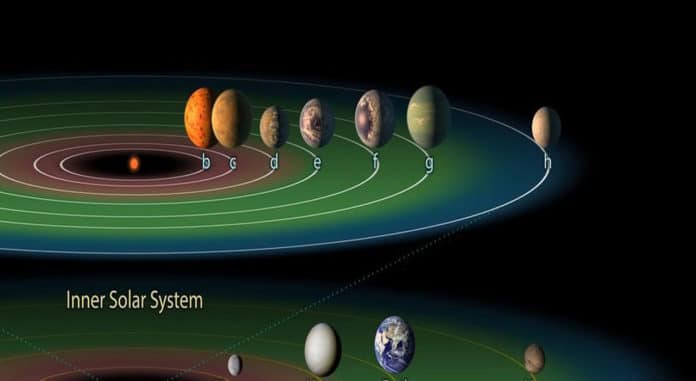Uncovering the occurrence rate of terrestrial planets within the habitable zone (HZ) of their host stars has been a particular focus of exoplanetary science in recent years. The statistics of these occurrence rates have been mainly derived from transiting planet discoveries.
A new study explored the width of the habitable zone as a function of spectral type and the dynamical constraints on the number of stable orbits within the habitable zone for a given star.
Scientists from the UC Riverside have demonstrated a model in which they simulated planets of various sizes orbiting their stars. An algorithm accounted for gravitational forces and helped test how the planets interacted with each other over millions of years.
The model suggested that other stars could have as many as seven Earth-like planets in the absence of a gas giant like Jupiter.
UC Riverside astrobiologist Stephen Kane said, “More than seven, and the planets become too close to each other and destabilize each other’s orbits.”
Then why this principle does not apply to our solar system? It helps if the planets’ movement is circular rather than oval or irregular, minimizing any close contact and maintain stable orbits.
Kane also suspects Jupiter, which has a mass two-and-a-half times that of all the other planets in the solar system combined, limited our system’s habitability.
He said, “It has a big effect on the habitability of our solar system because it’s massive and disturbs other orbits.”
In the future, Kane is planning to look for new stars surrounded by smaller planets. These stars will be prime targets for direct imaging with NASA telescopes like the one at Jet Propulsion Laboratory’s Habitable Exoplanet Observatory.
During the study, Kane identified one such star, Beta CVn, which is relatively close by at 27 light-years away. Because it doesn’t have a Jupiter-like planet, it will be included as one of the stars checked for multiple habitable zone planets.
Future studies will also involve the creation of new models that examine the atmospheric chemistry of habitable-zone planets in other star systems.
Kane said, “Although we know Earth has been habitable for most of its history, many questions remain regarding how these favorable conditions evolved with time and the specific drivers behind those changes. By measuring the properties of exoplanets whose evolutionary pathways may be similar to our own, we gain a preview into the past and future of this planet — and what we must do to main its habitability.”
Journal Reference:
- Stephen R. Kane et al. Dynamical Packing in the Habitable Zone: The Case of Beta CVn. DOI: 10.3847/1538-3881/ab9ffe
